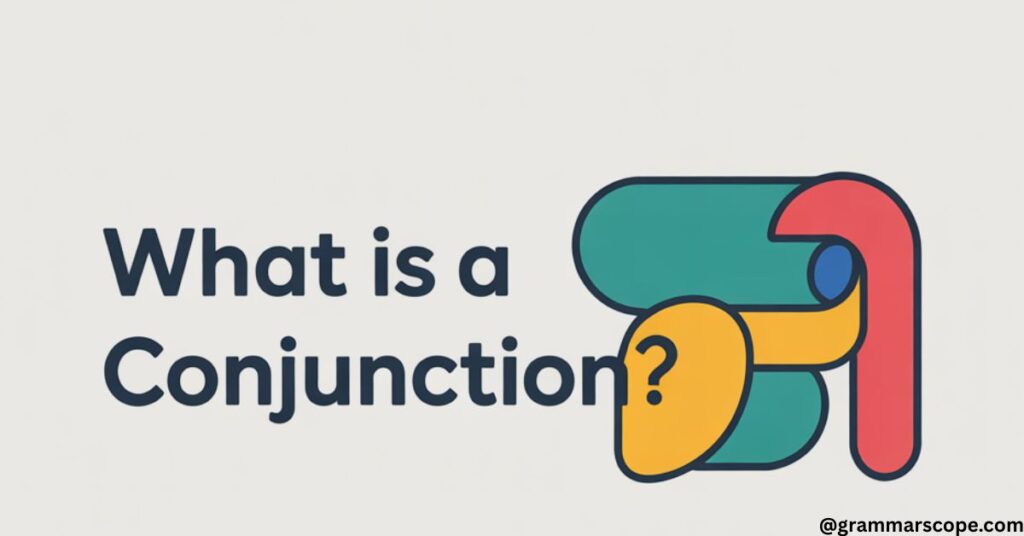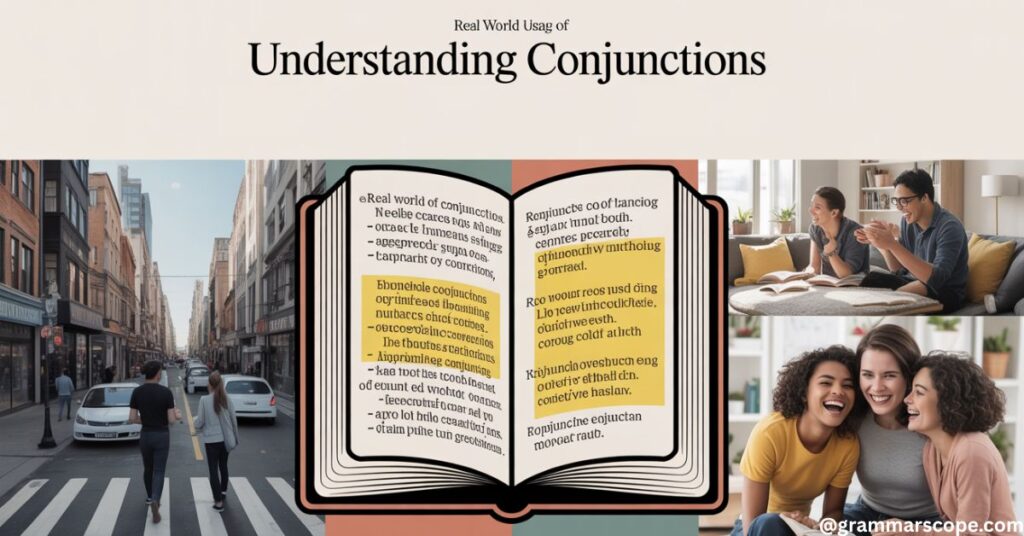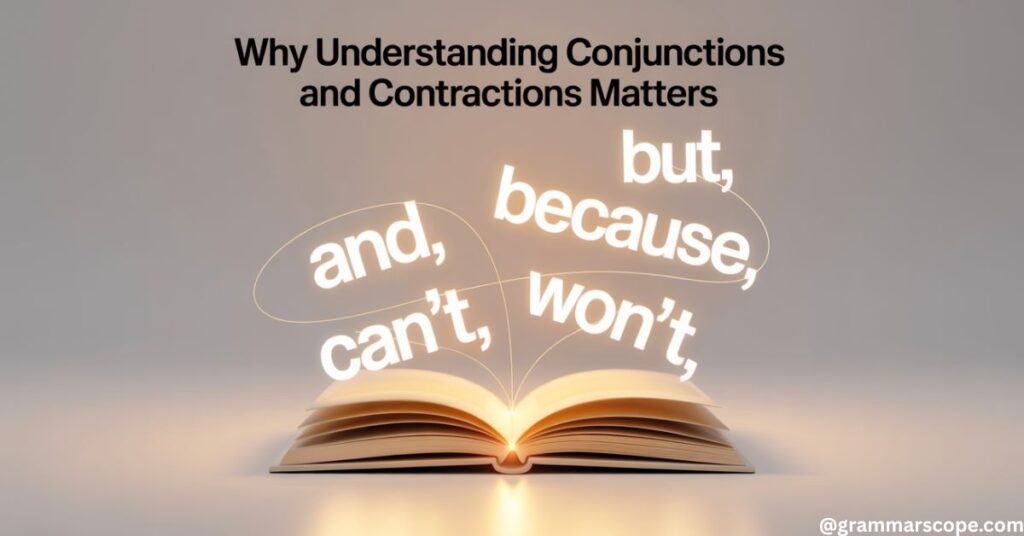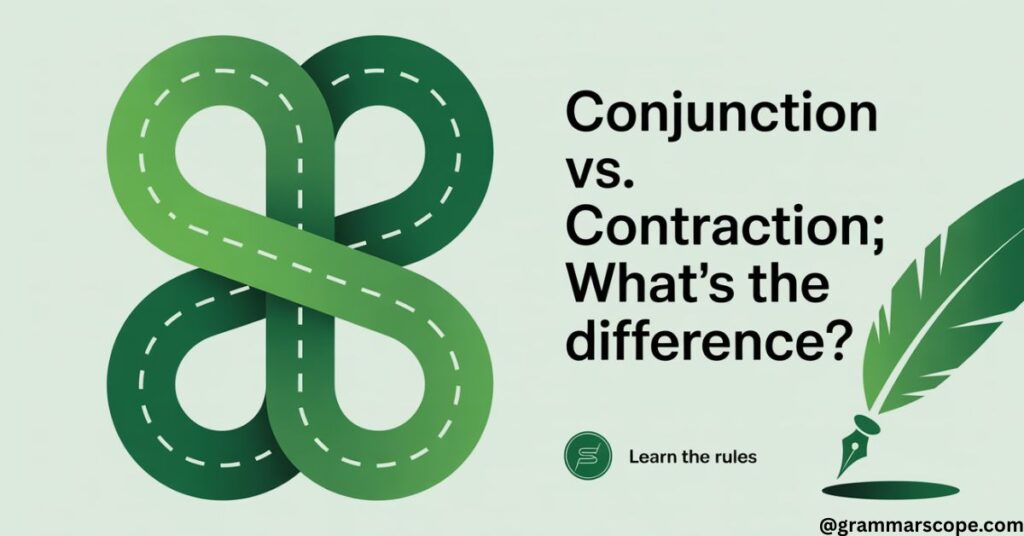Mastering English grammar often begins with recognizing subtle distinctions between similar sounding terms. Two such terms that commonly confuse learners are “conjunction” vs. “contraction.” While they may appear alike at first glance, their meanings and roles in sentence construction are entirely different. This article offers an in depth examination of what sets these terms apart, how each is used, and why understanding them improves both writing and speaking.
What Is a Conjunction?

A conjunction is a word used to link other words, phrases, or clauses. It serves as a bridge within a sentence, maintaining coherence and helping ideas flow logically. Without conjunctions, language would feel fragmented and disconnected.
There are three main types of conjunctions: coordinating conjunctions, subordinating conjunctions, and correlative conjunctions. Each plays a distinct role in sentence structure.
Coordinating conjunctions connect elements of equal grammatical weight. Words like “and,” “but,” “or,” “nor,” “for,” “so,” and “yet” fall into this category. For example, “He enjoys running and swimming” uses “and” to link two equal activities. In the sentence “She tried, but she failed,” the word “but” joins two independent clauses with contrasting ideas.
Subordinating conjunctions introduce dependent clauses and establish relationships of time, cause, condition, or contrast. Words like “because,” “although,” “since,” “unless,” and “while” are commonly used. For instance, “He stayed home because it was raining” uses “because” to explain the reason for staying home. “Although it was difficult, she succeeded” introduces a contrast between difficulty and success.
Correlative conjunctions always come in pairs, linking elements that have equal grammatical value. Pairs like “either…or,” “neither nor,” and “not only but also” emphasize relationships between ideas. For example, “Either you come with us or stay here” presents two options, while “Not only did he win, but he also broke the record” provides added emphasis.
The Origin and Role of Conjunctions in English
The word “conjunction” derives from the Latin term “coniungere,” meaning “to join together.” This etymology aligns with its role in uniting different parts of a sentence to form a complete thought. Conjunctions have been part of English since its earliest stages and are foundational in constructing complex sentences that convey nuanced meaning.
What Is a Contraction?

A contraction is a shortened version of one or more words formed by omitting certain letters and replacing them with an apostrophe. Contractions are essential in informal grammar, especially in everyday conversation. They make communication faster, more fluid, and more natural.
Subject-verb contractions combine pronouns with verbs. Examples include “I’m” for “I am,” “you’re” for “you are,” and “they’re” for “they are.” These forms keep speech smooth and casual.
Auxiliary verb contractions merge helping verbs with subjects or main verbs. Common examples include “I’ve” for “I have,” “she’ll” for “she will,” and “we’d” for “we would” or “we had.” They simplify complex verb phrases and enhance verbal rhythm.
Negation contractions are formed by joining a verb with “not.” Examples include “don’t” for “do not,” “isn’t” for “is not,” and “can’t” for “cannot.” These forms mirror the natural pace and tone of everyday conversation.
Historical Context of Contractions
Contractions have been part of English since the early modern period, gaining popularity as language shifted toward efficiency and informality. While contractions were initially frowned upon in formal writing, they eventually became accepted in speech, literature, and informal prose. Their purpose remains the same: to streamline communication.
Conjunction vs. Contraction: Core Differences
Conjunctions and contractions differ fundamentally in their function. Conjunctions are used to link ideas, creating relationships between different parts of a sentence. In contrast, contractions reduce the length of words or phrases, making them quicker to say or write.
A conjunction never uses an apostrophe. It simply connects elements within a sentence. A contraction, on the other hand, always involves an apostrophe that marks the omission of letters. For instance, in the sentence “I wanted to join, but I couldn’t,” the word “but” functions as a conjunction linking two clauses, while “couldn’t” is a contraction of “could not.”
Real World Usage of Conjunctions

Conjunctions serve as essential tools in writing and speaking. In “She wanted to leave because she was tired,” the word “because” adds a reason for the action. In “He was nervous, yet he smiled,” the word “yet” introduces contrast. Whether used in conversation or formal writing, conjunctions bring clarity, cohesion, and logic to language.
Everyday Use of Contractions
Contractions are especially common in informal speech. Phrases like “I’m going,” “we’ve been there,” and “they’re happy” reflect how people naturally communicate. In casual writing, such as emails, blogs, and text messages, contractions make the tone more approachable and relatable. They help avoid sounding too rigid or distant.
How Contractions Shape Informal Communication
In daily conversations, contractions are second nature. People rarely say “I am not” when “I’m not” feels more natural and efficient. This shortcut in speech is what makes contractions so integral to casual dialogue. They remove unnecessary formality, allowing for faster, more fluid interaction. For instance, instead of saying “She will not go,” people almost always say “She won’t go.” This shift in language makes conversations feel less robotic and more authentic.
Contractions in Modern Writing
Beyond speech, contractions dominate informal writing. They are a staple in emails, social media captions, blog posts, texting, and even marketing copy. Using contractions like “it’s,” “they’re,” or “you’ve” creates a conversational tone that mirrors how we naturally speak. For example, a blog post that says “You’ll love these tips” sounds warmer and more engaging than “You will love these tips.” The contraction feels personal—it’s like a friendly voice speaking directly to the reader.
The Emotional Impact of Contractions
Contractions do more than just save space; they change the emotional tone of a sentence. Saying “I do not understand” feels distant or formal, while “I don’t get it” feels open, even vulnerable. This subtle difference matters, especially in storytelling, customer service writing, or educational material. Using contractions helps writers sound more approachable and human.
Are There Limits to Using Contractions
Yes, context is key. In everyday use especially online or in casual print contractions are not only accepted but often expected. However, they may not be appropriate in every setting. Academic writing, legal documentation, official letters, and scientific reports usually require full word forms to maintain professionalism and clarity. Still, many modern business communications do use contractions selectively to avoid sounding too rigid.
Why Contractions Improve Readability
When readers encounter contractions, they process the sentence more quickly. It’s easier for the brain to read “You’re welcome” than “You are welcome.” This contributes to smoother reading flow and overall comprehension. That’s why contractions are ideal for user manuals, newsletters, product descriptions, and any form of communication that values clarity and reader-friendliness.
When to Use Conjunctions and Contractions
In spoken English, contractions dominate. They reflect real-life conversation patterns and speed up communication. Conjunctions are equally common in speech, providing seamless transitions between ideas. Saying “I’d go, but I’m busy” uses both grammar tools effectively in a single sentence.
In formal writing, contractions are usually avoided. Academic papers, technical documents, and professional reports favor the full forms of verbs. Sentences like “He does not agree” or “They are attending” are more suitable in such contexts. However, conjunctions are still widely used, as they contribute to logical sentence structure.
Knowing when to avoid these tools is also important. Contractions should not appear in legal documents or research publications. Conjunctions, while generally acceptable, should not be overused at the beginning of every sentence. Doing so may result in repetitive or run-on structures.
How to Master Conjunctions and Contractions
One effective method is to read your work aloud. This helps you identify whether contractions make your tone too casual or whether conjunctions improve clarity. In blog posts or storytelling, using contractions adds warmth and personality. In essays or proposals, using conjunctions ensures coherence without sacrificing formality.
Pay attention to punctuation. Contractions require apostrophes in specific places, such as “it’s” for “it is” and “you’ve” for “you have.” Conjunctions don’t use apostrophes, so confusing them with contractions can lead to grammar mistakes. Review sentence structure and grammar tips regularly to stay sharp.
Style Comparison: Academic vs Conversational
Consider how grammar shifts between formal and informal tone. An academic sentence might say, “Although the methodology was sound, the results were inconclusive due to inconsistent data.” This sentence uses a subordinating conjunction and avoids contractions.
A conversational version of the same sentence might read, “The method seemed solid, but it didn’t work because the data wasn’t consistent.” It includes contractions and uses simpler conjunctions for a more relaxed tone.
This contrast highlights how choosing between conjunctions and contractions depends on context. Matching your grammar to your audience improves clarity and engagement.
Why Understanding Conjunctions and Contractions Matters

Being able to distinguish between conjunctions and contractions sharpens your communication skills. It helps tailor your language to different situations, from casual chats to professional emails. Understanding their function enhances sentence structure and prevents common grammar errors.
Writers, students, professionals, and language learners all benefit from using these tools effectively. Conjunctions connect thoughts with logic. Contractions simplify expressions for ease and tone. Together, they provide balance and flexibility in language use.
Improving your grasp of these concepts is not about memorizing rules. It’s about listening to how people speak, noticing how writers write, and practicing until you find your voice. Whether constructing a persuasive argument or writing a simple email, knowing when to link and when to shorten can elevate your English fluency.
Here is a detailed table about Everyday Use of Contractions that you can insert into your document. This table enhances understanding by comparing formal and informal usage across different contexts:
Everyday Use of Contractions
| Context | Without Contraction (Formal) | With Contraction (Everyday Use) | Tone/Effect |
|---|---|---|---|
| Casual Conversation | I am going to the store. | I’m going to the store. | Sounds natural and conversational |
| Text Messaging | We will meet at noon. | We’ll meet at noon. | Faster, friendlier tone |
| Blog Writing | It is important to plan ahead. | It’s important to plan ahead. | Feels more personal and relatable |
| Email to a Friend | You are not late. | You’re not late. | Warm and reassuring |
| Social Media Post | They are having a great time. | They’re having a great time. | More engaging and natural-sounding |
| Academic Paper | He does not agree with the theory. | He doesn’t agree with the theory. | Contractions are avoided for formality |
| Business Report | The client is not satisfied. | The client isn’t satisfied. | Full forms are preferred for clarity |
| Customer Service Chat | We are happy to assist you. | We’re happy to assist you. | Maintains professionalism with friendliness |
| Public Speaking | I cannot believe the results. | I can’t believe the results. | Depends on the formality of the speech |
| Song Lyrics or Dialogue | I would have gone there if I could. | I’d’ve gone there if I could. | Mirrors spoken English for authenticity |
FAQs
What is the difference between a conjunction and a contraction?
A conjunction connects words, phrases, or clauses in a sentence to show relationships between ideas. A contraction, on the other hand, shortens words by omitting letters and using an apostrophe. For example, in the sentence “I tried, but I couldn’t,” the word “but” is a conjunction, while “couldn’t” is a contraction of “could not.”
Can you use both a conjunction and a contraction in the same sentence?
Yes, and it’s quite common. Take the sentence “They’d go with us if they weren’t busy.” Here, “they’d” and “weren’t” are contractions, while “if” is a subordinating conjunction that links the clauses.
Are contractions acceptable in academic or professional writing?
Contractions are typically avoided in formal writing, such as academic essays, legal contracts, and research papers. Writers prefer the full forms of words (e.g., “do not” instead of “don’t”) to maintain formality and precision. However, in creative or conversational writing, contractions help create a more natural tone.
Is “can’t” a contraction or a conjunction?
“Can’t” is a contraction, not a conjunction. It combines “can” and “not” into a shorter form. A conjunction would be something like “and,” “but,” or “so,” which connects different parts of a sentence.
Why are apostrophes used in contractions?
Apostrophes are used in contractions to indicate that one or more letters have been left out. For example, in “doesn’t,” the apostrophe shows that the letter “o” from “not” has been omitted.
Are conjunctions used differently in spoken and written English?
In both spoken and written English, conjunctions are used to connect ideas. However, in speech, people often start sentences with conjunctions like “and” or “but” more freely, while in formal writing, doing so may be seen as stylistically weak unless done for emphasis or rhythm.
What are some common mistakes when using contractions and conjunctions?
A frequent mistake is confusing similar-looking words. For instance, writing “its” when you mean “it’s,” or misplacing apostrophes in contractions. Another issue is overusing coordinating conjunctions at the beginning of sentences, which can make writing feel repetitive or fragmented.
Final Thought
Understanding the difference between a conjunction and a contraction isn’t just about mastering grammar terms—it’s about becoming a more confident and effective communicator. Conjunctions help ideas flow smoothly, guiding readers or listeners through your thoughts with clarity and purpose. Contractions, on the other hand, make your speech and writing sound natural, personal, and engaging. When you know how and when to use both, you bring precision and personality to your language. Whether you’re writing an essay, sending a text, or speaking in public, this simple distinction can make a real difference in how your message is received.

Emma Olivia is an experienced blogger and the creative mind behind Grammar Scope. With a passion for language and years of writing expertise, she crafts engaging, informative content that simplifies grammar and writing tips for readers worldwide. Emma’s dedication to clear communication and love for the written word shine through every article she publishes, making Grammar Scope a trusted resource for language enthusiasts and learners alike.







